Microtubule-Based Control of Motor-Clutch System Mechanics in Glioma Cell Migration
- PMID: 30485822
- PMCID: PMC6345402
- DOI: 10.1016/j.celrep.2018.10.101
Microtubule-Based Control of Motor-Clutch System Mechanics in Glioma Cell Migration
Abstract
Microtubule-targeting agents (MTAs) are widely used chemotherapy drugs capable of disrupting microtubule-dependent cellular functions, such as division and migration. We show that two clinically approved MTAs, paclitaxel and vinblastine, each suppress stiffness-sensitive migration and polarization characteristic of human glioma cells on compliant hydrogels. MTAs influence microtubule dynamics and cell traction forces by nearly opposite mechanisms, the latter of which can be explained by a combination of changes in myosin motor and adhesion clutch number. Our results support a microtubule-dependent signaling-based model for controlling traction forces through a motor-clutch mechanism, rather than microtubules directly relieving tension within F-actin and adhesions. Computational simulations of cell migration suggest that increasing protrusion number also impairs stiffness-sensitive migration, consistent with experimental MTA effects. These results provide a theoretical basis for the role of microtubules and mechanisms of MTAs in controlling cell migration.
Keywords: actin; cell migration; computational modeling; cytoskeletal crosstalk; mechanotransduction; microtubule; microtubule-targeting agent; paclitaxel; receptor tyrosine kinase; vinblastine.
Copyright © 2018 The Authors. Published by Elsevier Inc. All rights reserved.
Conflict of interest statement
DECLARATION OF INTERESTS
The authors declare no competing interests.
Figures
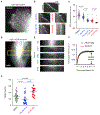
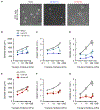


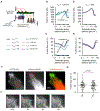
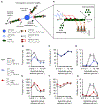
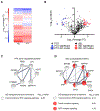
Similar articles
-
Nuclear motility in glioma cells reveals a cell-line dependent role of various cytoskeletal components.PLoS One. 2014 Apr 1;9(4):e93431. doi: 10.1371/journal.pone.0093431. eCollection 2014. PLoS One. 2014. PMID: 24691067 Free PMC article.
-
Regulation of polarity in cells devoid of actin bundle system after treatment with inhibitors of myosin II activity.Cell Motil Cytoskeleton. 2008 Sep;65(9):734-46. doi: 10.1002/cm.20295. Cell Motil Cytoskeleton. 2008. PMID: 18615701
-
End-binding proteins sensitize microtubules to the action of microtubule-targeting agents.Proc Natl Acad Sci U S A. 2013 May 28;110(22):8900-5. doi: 10.1073/pnas.1300395110. Epub 2013 May 14. Proc Natl Acad Sci U S A. 2013. PMID: 23674690 Free PMC article.
-
Microtubule involvement in regulating cell contractility and adhesion-dependent signalling: a possible mechanism for polarization of cell motility.Biochem Soc Symp. 1999;65:147-72. Biochem Soc Symp. 1999. PMID: 10320938 Review.
-
Cytoskeletal Crosstalk in Cell Migration.Trends Cell Biol. 2020 Sep;30(9):720-735. doi: 10.1016/j.tcb.2020.06.004. Epub 2020 Jul 13. Trends Cell Biol. 2020. PMID: 32674938 Review.
Cited by
-
Brain and Breast Cancer Cells with PTEN Loss of Function Reveal Enhanced Durotaxis and RHOB Dependent Amoeboid Migration Utilizing 3D Scaffolds and Aligned Microfiber Tracts.Cancers (Basel). 2021 Oct 14;13(20):5144. doi: 10.3390/cancers13205144. Cancers (Basel). 2021. PMID: 34680293 Free PMC article.
-
A mode of cell adhesion and migration facilitated by CD44-dependent microtentacles.Proc Natl Acad Sci U S A. 2020 May 26;117(21):11432-11443. doi: 10.1073/pnas.1914294117. Epub 2020 May 7. Proc Natl Acad Sci U S A. 2020. PMID: 32381732 Free PMC article.
-
Predicting Confined 1D Cell Migration from Parameters Calibrated to a 2D Motor-Clutch Model.Biophys J. 2020 Apr 7;118(7):1709-1720. doi: 10.1016/j.bpj.2020.01.048. Epub 2020 Feb 25. Biophys J. 2020. PMID: 32145191 Free PMC article.
-
RAD-TGTs: high-throughput measurement of cellular mechanotype via rupture and delivery of DNA tension probes.Nat Commun. 2023 Apr 28;14(1):2468. doi: 10.1038/s41467-023-38157-6. Nat Commun. 2023. PMID: 37117218 Free PMC article.
-
A multiscale theory for spreading and migration of adhesion-reinforced mesenchymal cells.J R Soc Interface. 2023 Dec;20(209):20230317. doi: 10.1098/rsif.2023.0317. Epub 2023 Dec 13. J R Soc Interface. 2023. PMID: 38086406 Free PMC article.
References
-
- Belotti D, Rieppi M, Nicoletti MI, Casazza AM, Fojo T, Taraboletti G, and Giavazzi R (1996). Paclitaxel (Taxol(R)) inhibits motility of paclitaxel-resistant human ovarian carcinoma cells. Clin. Cancer Res 2, 1725–1730. - PubMed
-
- Bergès R, Tchoghandjian A, Honoré S, Estève M-A, Figarella-Branger D, Bachmann F, Lane HA, and Braguer D (2016). The novel tubulin-binding checkpoint activator BAL101553 inhibits EB1-dependent migration and invasion and promotes differentiation of glioblastoma stem-like cells. Mol. Cancer Ther 75, 2740–2749. - PubMed
Publication types
MeSH terms
Substances
Grants and funding
LinkOut - more resources
Full Text Sources

